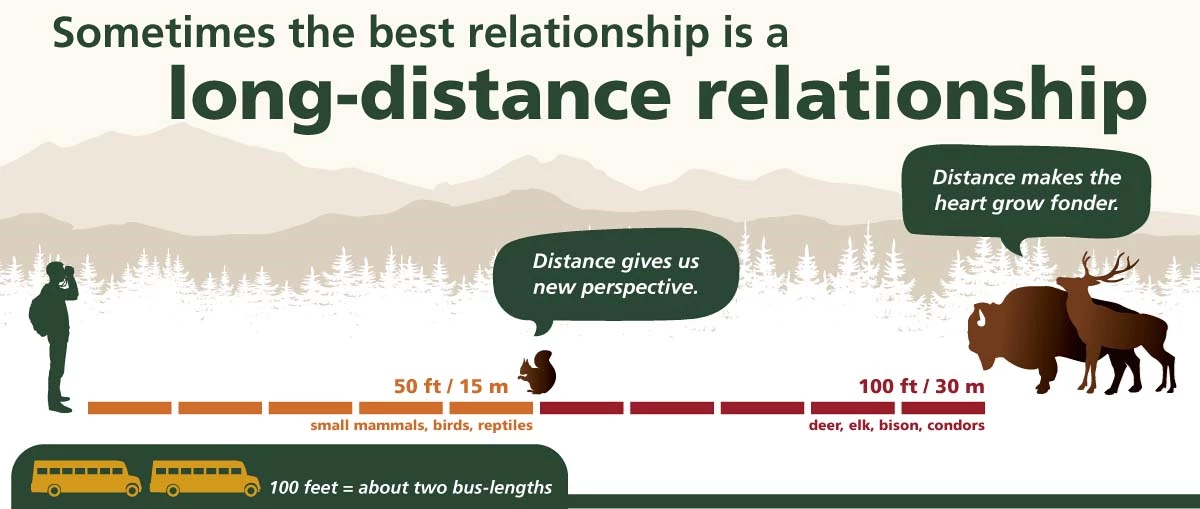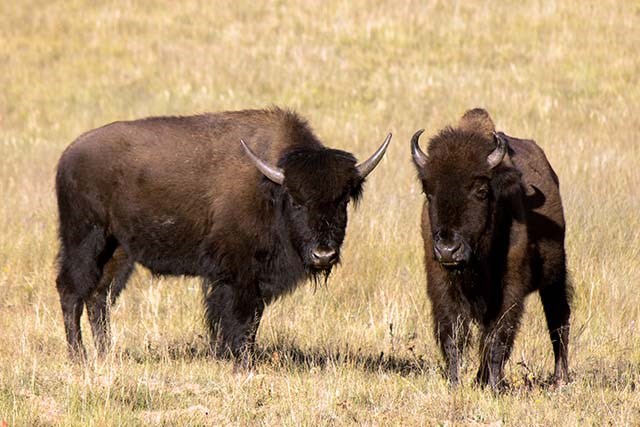
It can be hard to believe that a safe distance is as much about the animal’s welfare as it is about yours, but it’s true. Getting too close, feeding, and touching are all things that can put you and your furry, feathered, or scaled counterpart in grave danger. While Grand Canyon National Park is a conscientious partner for visitors, it also remains continuously committed to the protection and preservation of nature and wildlife. Despite their good intentions, some visitors love park animals to death. As wildlife become used to humans and lose their natural fear, the animals become aggressive and may be destroyed. Although they may appear harmless and even curious about you, those little rock squirrels cause the most injuries to visitors. That’s partly why harassing or feeding any kind of wildlife, no matter how small or familiar, is illegal in all national parks. We want all visitors to create lasting memories, so be safe and remember: distance always makes the heart grow fonder. How close is too close?While you may be committed to getting the perfect photo, stay at least 100 feet (30 meters) or about two bus lengths away from bison, elk, deer, bighorn sheep, California Condors, and mountain lions. Keep at least 50 feet (15 meters) or about one bus-length away from other smaller wildlife like squirrels, birds, and reptiles. Keep Besides sharp teeth and claws, antlers and hooves are dangerous, so never underestimate the power of wildlife. Stay safe and never assume you are the one that can get away with a close encounter. But, what if I really want the perfect photo?The popularity of selfies and capturing any moment through photographs or video is posing a new threat to wildlife and humans. Trigger-happy tourists have started to provoke animals, and in some instances, alter their behaviors as a result. Quietly watching from a distance can be even more rewarding than getting the perfect shot. Perhaps you even came here to “get away” from a busy lifestyle and technology. So, use your zoom or a telephoto lens, or put your camera down and take a moment to really appreciate what you see. 
See our How to View and Photograph Wildlife page for tips on how to get a great photo or video from a safe distance. What if I want to get an animal’s attention?Calling, clicking, whistling or making noises of any kind to attract wildlife is illegal. Animals deserve to enjoy the park without disruption just as you do.If there’s a group of people, is it safer to be near wildlife?Whether it’s just you or 10 people, keep the long distance. As crowds gather (as they often do), wildlife can quickly feel threatened and, in their panic, harm people. This is especially the case as people start to surround the animal(s), even if they are at the proper distance, because the wildlife may feel trapped. If people around you stop maintaining the 50 feet or 100 feet distance, don’t be afraid to speak up and remind your fellow visitors of the regulations. Sometimes, in the moment, anyone could use a gentle reminder that long-distance relationships with wildlife are better for everyone. What if an animal approaches me?Wildlife may not know better, but YOU do. Although it may feel flattering, if any kind of wildlife approaches you, back away and maintain that safe distance. It’s your responsibility and your safety —help us keep wildlife wild. Can I feed the animals?Feeding animals is prohibited. This is for their safety as well as yours. Wildlife quickly become persistent pests to you and others if you feed them. Even the scent left over in an empty cooler can attract a wild animal. When animals depend on people for food it can cause injuries and spread disease, which can ultimately lead to an animal’s demise. What if an animal begs for food?Animals can easily pick up scavenging practices, so never feed them. Animals stay healthier when you do not them. And, once they learn to beg, they can become aggressive, more likely to get injured by vehicles, and become seriously ill. They do not need your food handouts to survive. You can help us curtail this unwanted behavior from animals by putting your food away and moving away from the animal. Ask a ranger for other ways you can help. Ah, but what harm could one person really do when they get too close or toss a piece of food to an animal? I’ve been up close to wildlife before!Some of us might think of ourselves as “animal whisperers” or be really familiar with them. We can certainly appreciate that, but consider using your gift to help our national parks be a place where wildlife can be wild. That’s why you and all of our other guests have come to appreciate these special places. Be a role model to others in your family or group and even other visitors by embodying our mission to protect and preserve our wildlife. Risks to you include:
Risks to wildlife include:

Viewing North Rim Bison.
Learn more about the variety of wildlife found within Grand Canyon National Park
Elk Safety Video (South Rim)
Visit our keyboard shortcuts docs for details
Elk are one of the most dangerous animals in Grand Canyon National Park. They are not usually aggressive, but will defend themselves if people get too close. Please do not approach elk, and view them from at least 100 feet (30 m).
Visit our keyboard shortcuts docs for details
A visitor, tempted to feed a squirrel for a photo, meets her "Inner Ranger" and realizes that small actions have big impacts to wildlife and other visitors. |
Last updated: September 8, 2020
